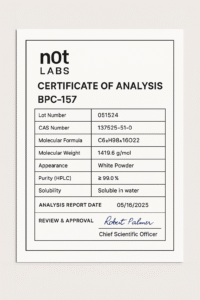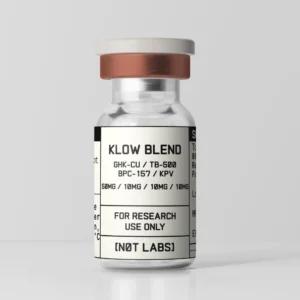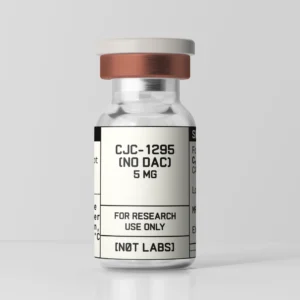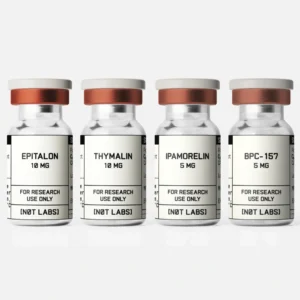Overview
BPC-157 peptide (Body Protection Compound-157) is a stable gastric pentadecapeptide that has been widely studied in preclinical research for its regenerative potential. Investigations have explored its role in tendon and ligament healing, skeletal muscle recovery, gastrointestinal protection, and angiogenesis.
Compound Breakdown
- BPC-157 (5mg / 10mg): A synthetic peptide fragment derived from human gastric juice. Research suggests potential activity in modulating angiogenesis, accelerating wound closure, supporting gastrointestinal integrity, and protecting against stress-induced organ damage.
Research Applications
Preclinical studies of BPC-157 peptide have examined:
- Soft tissue repair → tendon rupture, ligament healing, and skeletal muscle recovery models.
- Angiogenesis → enhanced vascularization through VEGF modulation and nitric oxide pathways.
- Gastrointestinal protection → ulcer and inflammatory bowel disease models.
- Neuroprotection → early findings in CNS and spinal cord injury models.
- Synergistic exploration → often studied alongside TB-500 in connective tissue and injury recovery models.
Related Categories
BPC-157 is part of Not Labs’ Tissue & Recovery category, which also includes TB-500 and GHK-Cu for regenerative and repair studies.
Compliance Statement
All Not Labs products are strictly for research use only and are not intended for human or veterinary use.






Reviews
There are no reviews yet.